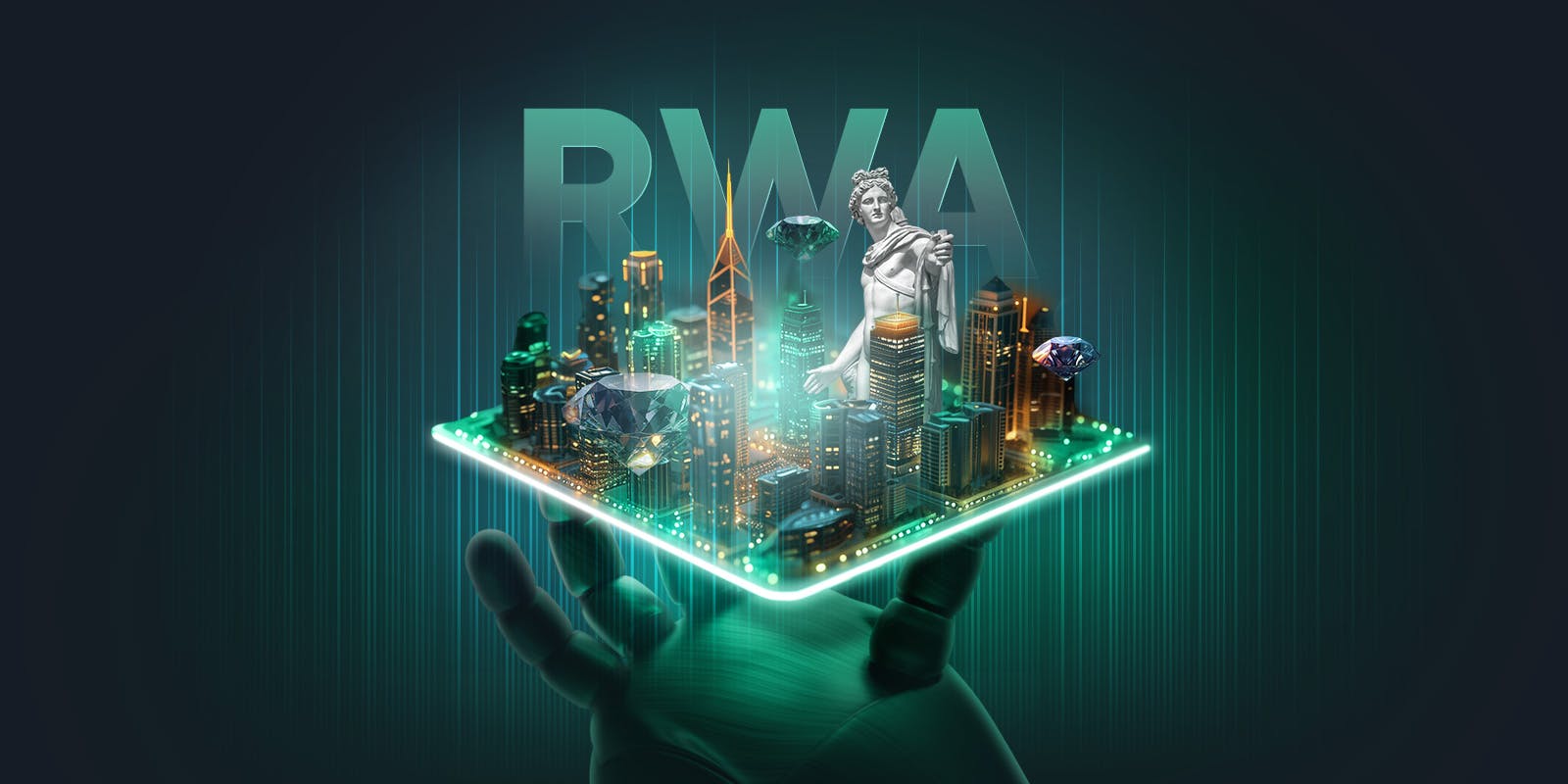Real World Assets - Building the next generation of markets
“I believe the next generation for markets, the next generation for securities will be tokenization of securities. Distributed ledgers will bring instantaneous settlement and change the whole ecosystem,” - Larry Fink, CEO of BlackRock
If software is eating the world, real-world asset tokenization is eating capital markets.
In recent years, the RWA (Real World Assets) sector has emerged as one of the most promising use cases of blockchain technology and is starting to challenge the status quo of the past 30 years in global capital markets. Many see this sector as a way to tap into trillions of dollars of the world's assets and bring them on-chain. Recently, we’ve even witnessed the biggest names in finance, like BlackRock and Franklin Templeton, showing a deep interest in this field and launching their own tokenized funds.
So what exactly is the RWA sector, why is it generating so much hype, and what does the future look like for RWAs? Let’s explore.
The case for RWA
What is RWA
The RWA (Real World Assets) sector is focused on bringing real assets that live off-chain onto the blockchain. As such, the case for RWA is simple: to bridge the gap between the stability and value proposition of real-world assets and the innovative features and potential efficiencies of blockchain technology and DeFi (Decentralised Finance).
Theoretically, any real-world assets that can be easily tradable could be tokenized and brought on-chain. This includes both tangible and intangible assets, as well as fungible or non-fungible assets. Below is a non-exhaustive list of some of them.
The benefits of tokenization are clear
RWAs would not have gained so much traction if there had been no clear advantage to bringing assets on-chain. Below is a table explaining the main benefits of tokenization.
One of DeFi's core foundations was to create a better standard for exchanging different assets seamlessly using blockchain technology. In that sense, RWAs are simply about recognising DeFi's value proposition and extending it to every tradable asset to build the next generation of markets—one that is more transparent, secure, fair, and open.
Understanding the RWA meta
We are entering the tokenized era of markets, and slowly but surely, all assets will move on-chain. This is especially true when we consider that the RWA meta is right at the intersection of two trends shaping the world today: the digitalisation and financialisation of everything.
- Digitalisation: The world is moving increasingly digital. We have connected phones, watches, and, soon, connected brains. In that sense, it seems that the logical progression is for proof of ownership of assets to migrate onto blockchain networks.
- Financialisation: As markets play an increasing role in global economies and commerce becomes increasingly borderless, with individuals transferring ownership of assets among peers worldwide, it makes increasingly sense to build market mechanisms that are more efficient, more transparent, fair, and open.
Main challenges
While bringing real-world assets on-chain yields many benefits, it also comes with many challenges. Currently, the main one revolves around:
- Regulation: There is no clear answer to where to establish a market for tokenized assets without encountering a complex regulatory environment.
- Liquidity: Providing the right market structure for the liquidity and market-making of real-world assets can prove challenging, especially for highly illiquid markets that trade 24/7.
- Education: The complex nature of blockchain technology can be hard to grasp at first for people coming from TradFi, and it will take a long time before everyone understands the real value proposition of bringing real-world assets on-chain.
The evolution of RWA
USD-pegged stablecoins
The first killer use case of real-world asset tokenization was fiat-backed stablecoins. In recent years, this market has grown massively, and today, the two biggest fiat-backed stablecoins have a collective market capitalisation of over $130 billion, up from around $5 billion at the beginning of 2020.
Commodity-backed tokens
Another popular application of RWAs was the tokenization of precious metals such as Tether Gold (XAUT) or PAX Gold (PAXG) . While this is a relatively nascent market, it is growing fast, and the market caps of XAUT and $PAXG collectively amount to around $840 million.
Tokenized treasury are growing fast
The last big trend in RWAs was the tokenization of US Treasuries, and according to data from 21co , the market cap of this sector increased super fast and reached over $1.3 billion. We also note that big TradFi institutions have already entered this market. For example, Franklin Templeton, represented by the BENJI token, has amassed around $370 million in deposits, while BlackRock's BUIDL token has secured over $380 million in deposits.
The beginning of the next chapter
The tokenization of the world's assets is only getting started. Over time, the RWA sector is expected to continue growing and could be the bridge that we have all been waiting for between TradFi and DeFi to build the next generation of markets.
In the coming years, various financial assets will transition on-chain, including different kinds of bonds and equities. According to the Boston Consulting Group , the tokenization of global financial assets is estimated to be a $16 trillion market by 2030. Looking ahead, we can envision a future where not only pure financial assets but practically all easily monetisable assets—from luxury watches to art to real estate—will be tokenized on a blockchain. This is the future of finance.
